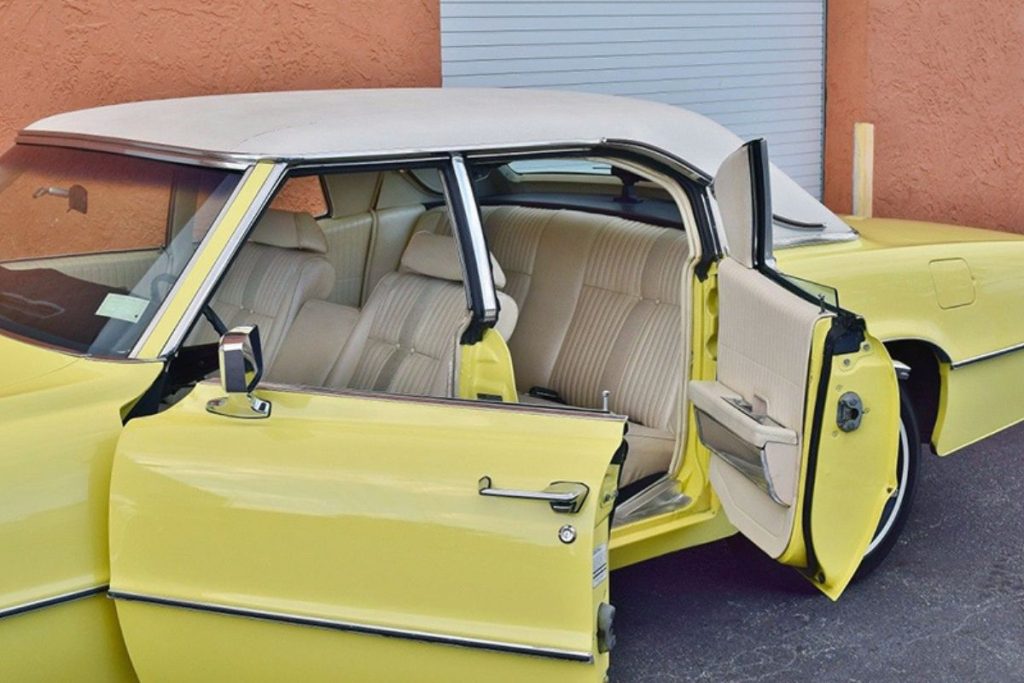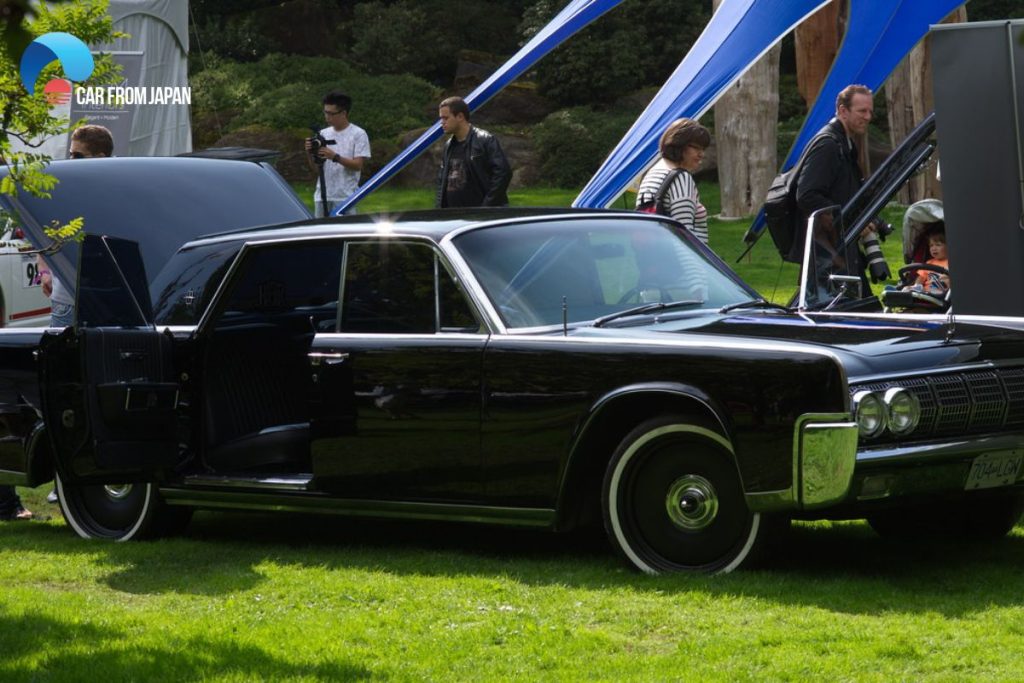Ever heard the term “suicide doors”? It might sound a little scary, but it’s just a name for a special kind of car door that opens the other way. We’re going to look at why some people love cars with suicide doors and what some of the drawbacks are.
Contents
Suicide Doors Meaning: The Story Behind Suicide Doors?
What are suicide doors?
“Suicide doors” is the name for a unique type of door in car door manufacturing technology. The “suicide” door was inspired by a 19th-century horse-drawn carriage. They are also known as rear-hinged doors, which are hinged at the rear and open in the opposite direction of the front doors.
“Suicide doors” were mass-produced in the early 20th century, but by the 1960s, this type of door was banned due to low safety. Today, “suicide doors” still occasionally appear on new models originating in the late 1990s and early 2000s. This is also a time when “suicide doors” are often mentioned in rap songs.
Why are they called suicide doors?
Suicide doors are called that because of the potential risk they pose to passengers. Unlike traditional front-hinged doors, suicide doors are hinged at the rear and open in the opposite direction. This design allows for easier access to the rear seats of a vehicle, but it also creates a potential safety hazard. In the event of an accident, if the door is not properly latched or secured, it could swing open and potentially eject the passengers from the car.

Because of the high risk of being unsafe, many people believe that only suicide can design such a door, from which the name “suicide door” was born. However, with modern safety features and advancements in engineering, the risk of this happening is greatly reduced, and many luxury car manufacturers have brought back the design as a stylish and functional feature.
Pros & Cons Of Cars With Suicide Doors
As its name suggests, “suicide door”, may cause the risk to passengers in the car. So if this type of door is dangerous, why do some automakers still equip it on their vehicles? Many car manufacturers assume that suicide doors have their own advantages and disadvantages:
Pros of suicide doors on a car
In addition to skepticism, the suicide doors also received many positive comments. Here are some potential advantages of cars with suicide doors:
- Easier access to the rear seats: Suicide doors make it easier to get in and out of the rear seats of a car. The wider opening and lack of a B-pillar in between the front and rear doors create more space and make it easier to maneuver, especially for passengers with mobility issues.
- Stylish design: Suicide doors have a unique and distinctive look that can add to the overall aesthetic appeal of a car. They are often associated with luxury and prestige and can help a car stand out from the crowd.
- Improved visibility: With no B-pillar in the way, suicide doors can provide better visibility for rear-seat passengers. This can be especially beneficial when sightseeing or enjoying scenic drives.
- Increased resale value: Cars with suicide doors are often considered collector’s items and can have a higher resale value compared to cars with traditional doors. This is especially true for vintage or classic cars with suicide doors.
Cons of suicide doors
Needless to say, “Suicide Door” clearly has some advantages such as being unique, creating a luxurious look for the car, opening the cabin door is very wide, and easy to get in and out of the car. However, this type of door has its biggest drawback, which is less safe.
Safety concerns
Imagine that with the usual design, it would be difficult for occupants to open the door at high speed due to the air pressure. The more you try to open the door, the more air will resist.

This will help occupants avoid falling out, preventing unfortunate accidents. On the contrary, if the door opens in the opposite direction, i.e., opens back, the above-mentioned airflow inadvertently becomes the assist force for the door to open faster. The passenger who accidentally opens the door will fall into a state of panic trying to pull the door back.
Worse, the back seat will be injured, fall out, and many unwanted things are at risk. In addition, many people believe that the reverse doors that open later will also be easily knocked out in a head-on collision.
These are the most obvious disadvantages of suicide doors. Especially when it was first introduced in the 30s, vehicles did not have seat belts and other safety features like modern cars, so the risk of falling out of the car when using this door is higher.
Limited availability
Cars with suicide doors are not as common as cars with traditional doors, which can make them harder to find and potentially more expensive to purchase.
Increased cost
Suicide doors often require additional engineering and design work, which can increase the cost of a car. This can make cars with suicide doors more expensive than their traditional counterparts.
Reduced structural rigidity
Suicide doors can weaken the structural integrity of a car, as they often require a lack of a B-pillar between the front and rear doors. This can make the car less stable and potentially less safe in the event of a collision.
Limited practicality
Suicide doors may not be as practical for everyday use, as they can be more difficult to open and close in tight parking spaces or in areas with limited clearance.
Watch more:
Suicide Doors: Do They Still Exit?
Yes, suicide doors still exist today, although they are not as common as traditional front-hinged doors. Despite having potential risks, there is no denying the strong appeal of this type of car door. It gives a special look to the vehicle, moreover, many expensive and classic car brands prefer this type of door.
The “suicide door” can be found in cars like the Mazda RX-8, Honda Element, Toyota FJ Cruiser, BMW i3, Spyker D12 supercar, or Rolls-Royce Phantom super luxury car. Many manufacturers, such as Citroën, Lancia, Opel, Panhard, Rover, Saab, Saturn, Škoda, and Volkswagen, have repeatedly introduced models using “Suicide Doors.” However, suicide doors are more commonly seen on concept cars and limited edition vehicles due to the additional engineering and design work required.
Currently, the safety concerns surrounding suicide doors have been greatly reduced thanks to modern safety features and advancements in engineering. We can take an example, with the Rolls-Royce Phantom model, the rear door is equipped with an electronic locking system that automatically activates the door lock when the car is running, very safe.
At this time, Suicide doors bring back spacious cabin space, and stylish accents, and create a classic, aristocratic look for the car. Although there have the improvements in the designs of suicide doors, they are still not as widely used as traditional doors in the automotive industry.
Conclusion
In the end, cars with suicide doors are a perfect example of a design choice that prioritizes form over pure function. While they offer a unique and elegant way to get in and out of a car, especially the back seats, they come with trade-offs in terms of convenience and safety.
Ultimately, their rarity on modern roads isn’t a sign of failure, but rather a reminder that some design choices are made to be special, not just practical. They stand as a testament to the idea that sometimes, the coolest feature is the one that’s a little different.



